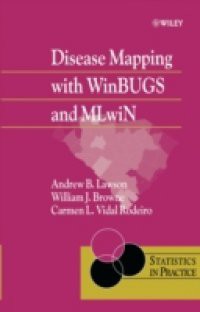Disease mapping involves the analysis of geo-referenced disease incidence data and has many applications, for example within resource allocation, cluster alarm analysis, and ecological studies. There is a real need amongst public health workers for simpler and more efficient tools for the analysis of geo-referenced disease incidence data. Bayesian and multilevel methods provide the required efficiency, and with the emergence of software packages such as WinBUGS and MLwiN are now easy to implement in practice. Provides an introduction to Bayesian and multilevel modelling in disease mapping. Adopts a practical approach, with many detailed worked examples. Includes introductory material on WinBUGS and MLwiN. Discusses three applications in detail relative risk estimation, focused clustering, and ecological analysis. Suitable for public health workers and epidemiologists with a sound statistical knowledge. Supported by a Website featuring data sets and WinBUGS and MLwiN programs. Disease Mapping with WinBUGS and MLwiN provides a practical introduction to the use of software for disease mapping for researchers, practitioners and graduate students from statistics, public health and epidemiology who analyse disease incidence data.

